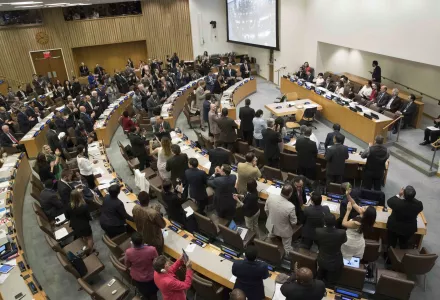Superpower Norm Suppression: The United States and the Nuclear Ban Treaty
A seminar with Rebecca Davis Gibbons, postdoctoral research fellow with the International Security Program and Project on Managing the Atom.
A seminar with Rebecca Davis Gibbons, postdoctoral research fellow with the International Security Program and Project on Managing the Atom.

With the rise of transnational activist networks in the post-Cold War era, the United States has frequently attempted to prevent the establishment of new global norms. Usually this effort is aimed at preventing new norms from becoming enshrined in multilateral treaties. This project introduces tactics of superpower norm suppression based on previous norm campaigns and then illustrates how the United States attempted to use these tactics to undermine a norm against the possession of nuclear weapons. This norm was institutionalized in July 2017 with the adoption of the Treaty on the Prohibition of Nuclear Weapons. Due to the mixed success of the superpower’s norm suppression tactics, the case of the nuclear non-possession norm illustrates how nascent norms opposed by the superpower often enter a period of limbo—the norm is accepted by some states, while the superpower and those it can influence continue to object to the new norm.